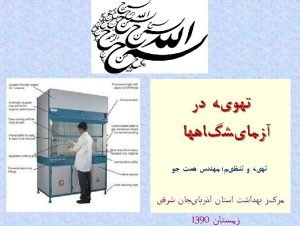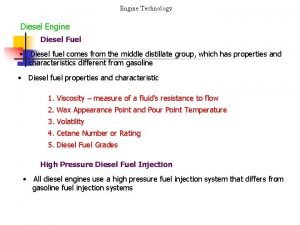1 Assessing the Influence of Diesel Exhaust Particles



- Slides: 3

1 Assessing the Influence of Diesel Exhaust Particles on Peanut Sensitization z Student: Zachary P. Allen – Quantitative Biology, BS Principal Investigator: Timothy P. Moran, MD, Ph. D Lab Manager: Robert M. Immormino, Ph. D Department: UNC School of Medicine Department of Pediatric Allergy & Immunology

2 z § Assessing the Influence of Diesel Exhaust Particles on Peanut Sensitization § Background § Peanut allergy is a potentially life-threatening disease that is increasing in prevalence for unclear reasons § Epidemiological studies suggest that exposure to traffic-related pollution, such as diesel exhaust particles (DEPs), may be a risk factor food allergy § Inhaled air pollutants can stimulate lung production of inflammatory cytokines, such as IL-1 a, which can promote allergic sensitization to inhaled antigens Hypothesis: § § The Project Inhaled DEPs stimulate IL-1 a production in the lungs, which is necessary for the development of peanut allergy Methods: § § DEPs or phosphate buffered saline (PBS) control was delivered to the airways of C 57 BL/6 J male mice by oropharyngeal (o. p. ) aspiration. 6 hours later, bronchoalveolar lavage fluid (BALF) was collected and inflammatory cytokines were measured by ELISA Crude peanut extract (CPE) +/- DEPs was administered to the airways of C 57 BL/6 J (wild-type) or IL-1 a knock out (KO) mice by o. p. on days 0, 3, 7 and 10. On day 18, mice were challenged with CPE by intraperitoneal (i. p. ) injection and body temperature was measured every 15 minutes for 1 hour (a decrease in body temperature is a sign of anaphylaxis) 1. CPE (50 ng) 2. CPE + DEP (100 ug)

3 z § Inhaled DEP induces lung production of inflammatory cytokines including IL-1 a, IL-6, TNF and TSLP (Figure 1) § Assessing the Influence of Diesel Exhaust Particles on Peanut Sensitization § § These cytokines are associated with promoting allergic sensitization Mice sensitized to inhaled peanut and DEP, but not peanut alone, develop peanut allergy as demonstrated by the development of anaphylaxis (decrease in body temperature) after peanut challenge (Figure 2) Figure 1. Inflammatory cytokine levels in BALF from DEP-treated mice. **p<0. 01, ***p<0. 001, ****p<0. 0001; Student’s t test. Contrary to our hypothesis, both C 57 BL/6 J and IL 1 a KO mice develop peanut allergy after sensitization with DEP and peanut (Figure 2) § § Results and Conclusions This indicates that IL-1 a is not necessary for peanut allergy development in our model Future directions § Determine if other inflammatory cytokines (IL-6, TSLP) are required for peanut allergy development after sensitization with DEP and peanut Figure 2. Measurement of anaphylaxis following peanut challenge





